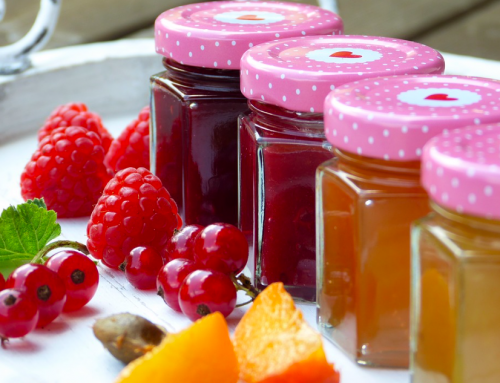Food safety is something that we often take for granted. We assume that the food we buy from the grocery store or order in a restaurant is safe to eat. But the truth is, food safety is a complex and many-layered issue. There are several factors that contribute to food safety, from the way food is grown and processed to the way it is prepared and served. When it comes to choosing how and where you eat, you need to be aware of these issues so that you can make informed choices about the food you eat. We will explore 9 things you should know about food safety. From cross-contamination to food labeling and foodborne illness, this guide will give you the information you need to make sure your next meal is a safe one.

Chopped parsley.
1. The Basics of Food Safety
Food safety is the practice of keeping food clean and safe to eat. This includes handling, preparing, and storing food in a way that prevents foodborne illnesses.
There are four basic steps to food safety: clean, separate, cook, and chill. These steps help to prevent cross-contamination, which is when bacteria or other contaminants from one food item spread to another.
The basic principles are that you need to wash your hands and all surfaces often, keep raw meat, poultry, seafood, and eggs away from other foods, cook food to the right temperature (with the help of a food thermometer), and refrigerate it promptly.
2. A History of Food Safety
The concept of food safety is a relatively new one. It only began to gain traction in the late 19th and early 20th centuries as a result of advances in food science and technology. Prior to that, people did not really think about food safety in the same way we do today. In fact, people did not understand germs at all.
Interestingly, the first real push for greater food safety came not from consumers or government regulators, but from the food industry itself. Large companies like Cargill and General Mills realized that if they could ensure their products were safe to eat, it would give them a competitive advantage. So, they began investing in research and development around food safety.
This eventually led to the creation of government agencies like the USDA (United States Department of Agriculture) and FDA (Food and Drug Administration), which are responsible for overseeing food safety in the United States today.
3. Cross Contamination
Cross-contamination of food is a major concern when it comes to food safety. The three main types of cross-contamination are food-to-food contamination, people-to-food contamination, and equipment-to-food contamination
When different types of food come into contact with each other, often through contact with surfaces or utensils, contamination can occur. This is particularly likely with raw meat or vegetables that contain harmful fungi.
Moreover, when food is not cooked properly, cross-contamination is likely, as this allows bacteria from the food to spread to other foods. Finally, one of the most common causes of cross-contamination is when someone does not wash their hands and passes harmful bacteria from one food to another through touch.
To avoid cross-contamination, it is essential to keep different types of food separate from each other, cook all food thoroughly, and wash all surfaces, hands, and utensils that come into contact with food. You can look online for more cross contamination training tips if you work in food processing or preparation. Cross-contamination causes numerous deaths each year in the US, so it is a problem we all need to take seriously.
4. Food Recalls
The FDA issues food recalls when there is a reasonable probability that the food may cause serious health problems or death. The FDA works with companies to voluntarily recall products, and also has the authority to order mandatory recalls if a company does not take voluntary action.
Foodborne illness outbreaks often lead to food recalls, as was the case with the E. coli outbreak linked to romaine lettuce. In such cases, the FDA investigates to identify the source of contamination and then works with companies throughout the supply chain to remove the contaminated product from store shelves and distribution channels.
Another example of a food product being recalled is the Natural Way almond butter recall. A customer notified the company that they had purchased a tub of peanut butter mislabeled as almond butter. This could cause serious illness or even death for someone with a peanut allergy.
Consumers can play an important role in food safety by being aware of food recalls and following instructions on how to dispose of or return recalled products. You can sign up for email alerts or check the FDA’s website for current recalls.
5. Foodborne Illness
Foodborne illnesses are caused by consuming contaminated food or water. The most common symptoms of foodborne illness are vomiting, diarrhea, and abdominal cramps. Some of these illnesses can be life-threatening, especially to young children, the elderly, and those with weakened immune systems.
You can reduce your risk of getting a foodborne illness by following some simple food safety guidelines, such as washing your hands thoroughly before handling food and cooking food to the proper temperature.
Even with the existence of agencies like the USDA and FDA, there have been plenty of outbreaks of foodborne illness. That is because ensuring food safety is an ongoing challenge, one that requires constant vigilance and innovation.
6. Laws About Food Safety
The FDA sets food safety standards for the United States. The agency also works with state and local governments to ensure that these standards are met. This agency has established laws that govern the production, distribution, and sale of food. These laws are designed to protect consumers from harmful food-borne illnesses and dangerous mislabeling.
The Federal Food, Drug, and Cosmetic Act (FFDCA) is the primary law that governs food and drug safety in the United States. This law gives the FDA the authority to regulate the manufacturing, processing, packaging, labeling, and distribution of food products.
The FFDCA also requires manufacturers to comply with Good Manufacturing Practices (GMPs). GMPs are a set of guidelines that address all aspects of food production, from farm to table. These guidelines help to ensure that food is safe for consumption.
7. Food Inspection Acts
The Federal Meat Inspection Act (FMIA) requires that all meat products be inspected for safety before they can be sold. This law also establishes minimum standards for meat products.
The Poultry Products Inspection Act (PPIA) similarly demands that all poultry products are inspected before they are sold. Likewise, there are minimum standards for poultry products.
Finally, the Egg Products Inspection Act (EPIA) states that all egg products should be inspected for safety before they can be sold.
8. Food Safety in Restaurants
There are a number of things to consider when it comes to food safety in restaurants. First and foremost, make sure the restaurant you are patronizing is clean. Check that the floors, walls, and surfaces are free of dirt and debris. The restrooms should also be clean and well-maintained.
Moreover, ensure the food itself is safe to eat. Look to see if it has been properly cooked and stored, when possible. All meat should be cooked thoroughly, and all vegetables should be washed before being served. If you have any questions about the safety of a particular dish, ask your server for more information.
By following these simple tips, you can help ensure that your next dining experience is a safe and enjoyable one.
9. Food Safety at Home
Finally, let’s look at food safety at home. The food we eat is only as safe as the environment in which it is prepared. There are many things that can contaminate food, even at home, so we need to take steps to prevent this from happening.
The best and easiest way to help keep food safe is to practice cleanliness. This means keeping your hands and surfaces clean when preparing food. It is also important to cook food properly. Undercooked or raw food can contain harmful bacteria that can make you sick.
Make sure you use different utensils and chopping boards for raw meat and fish than you use for the rest of your food. Finally, store food properly. Food should be stored in a cool, dry place and away from contaminants. Be sure to check expiration dates on food before eating it and throw away any food that has gone bad.

Seasoned steaks.
This has been a comprehensive guide to food safety. We have looked at 9 important aspects of food safety that you should be aware of. From cross contamination and food recalls to foodborne illnesses and food safety laws, this has been a thorough look at the process of ensuring the food we buy and eat is safe for consumption. The key takeaways from this guide to food safety are that you should always keep hands, utensils, and surfaces clean when preparing food. Moreover, keep different raw foods separate and cook all foods thoroughly to avoid contamination. Follow this advice to ensure that the food you eat is safe, clean, and uncontaminated.




